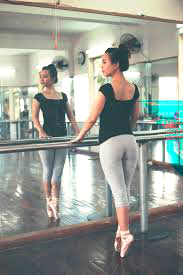 There are a multitude of barre fitness classes popping up throughout both the dance and fitness industry, tapping into the ever-hungry market for something new to try in the name of health and wellbeing. There has been some debate as to whether these classes can be defined as dance, or whether they sit purely within the fitness remit. Whilst there are often elements of dance in these classes – whether their aim is to tone, stretch or raise the heart rate – it is arguable that they fall under the fitness guise when looking at the credibility of the dance content.
There are a multitude of barre fitness classes popping up throughout both the dance and fitness industry, tapping into the ever-hungry market for something new to try in the name of health and wellbeing. There has been some debate as to whether these classes can be defined as dance, or whether they sit purely within the fitness remit. Whilst there are often elements of dance in these classes – whether their aim is to tone, stretch or raise the heart rate – it is arguable that they fall under the fitness guise when looking at the credibility of the dance content.
However there are some who argue the opposite. Taking dance moves and technique, they can contribute another element to individual workout routines. Barre work is particularly beneficial in this respect, as participants can use the barre to aid their progress and provide some stability as they build up their skill and confidence levels.
Within the dance industry there may be some uncomfortableness as to the teachers of these barre classes, and the qualifications they may need to do so. To teach pure fitness classes, a number of qualifications must be obtained in order for the teacher to do so. It seems these same teachers of fitness are trying their hand at barre, but without any specific dance training or understanding of barre work. The argument is that a dancer could not begin teaching fitness classes without any former training or qualifications, so why can a fitness instructor begin teaching a dance-based class?
It seems there is no clear-cut answer. In an objective sense the fact that fitness and barre classes are popular cannot be a bad thing, however the teaching of these should be legitimate and safe.
